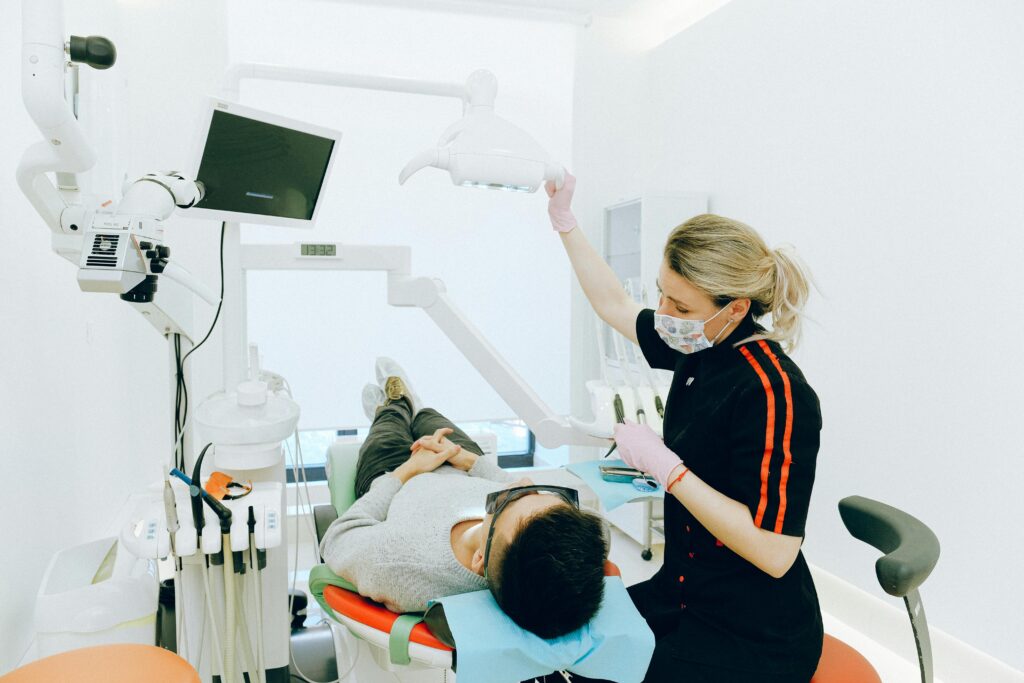Invisalign is a modern way to straighten your teeth. It uses clear plastic trays instead of metal braces. These trays, also called aligners, gently move your teeth into the right position over time.
You wear the aligners for at least 22 hours each day. Most people only remove them to eat, drink, brush, or floss. Invisalign can treat issues like crooked teeth, gaps, and minor bite problems. Treatment usually takes between 6 to 18 months, depending on the case.
But many people ask the same question: Do the results last forever?
Do Teeth Stay Straight After Invisalign?
The honest answer is: not always. Invisalign does a great job at straightening teeth. But once the treatment ends, your teeth can move again. This is called “orthodontic relapse.”
Why does this happen? It’s because your teeth sit in soft tissue and bone. When aligners move your teeth, the bone around them also needs to adjust. This can take many months. During this time, your teeth are still able to shift back to their old positions.
So while Invisalign can give you a straight smile, you need to take care to keep it that way.
What is the Average Age of Invisalign Patients?
What Causes Teeth to Move Again?
Several things can cause teeth to shift after Invisalign:
- Not Wearing a Retainer: This is the most common reason. A retainer holds your teeth in place after treatment. If you stop wearing it, your teeth may move.
- Ageing: As we grow older, our teeth naturally shift. This is especially true for the lower front teeth.
- Grinding Teeth: Many people grind their teeth while sleeping. This can push teeth out of position.
- Tooth Loss: When you lose a tooth, nearby teeth can move into the gap.
- Bad Habits: Habits like biting nails or pushing on teeth with your tongue can cause movement.
How to Keep Invisalign Results for Life
The key to long-lasting results is following the right steps after your Invisalign treatment. Here’s what you should do:
1. Wear Your Retainer
After Invisalign, you’ll need to wear a retainer every night. Some people may wear it full-time for the first few months. Over time, most people switch to wearing it just at night.
Retainers help your bone and gums hold the teeth in place. Without them, teeth often move back.
2. Attend Regular Check-Ups
Visit your dentist or orthodontist regularly. They’ll check your teeth and make sure everything is stable. They may spot early signs of movement and help fix it quickly.
Is Invisalign Painful?
3. Look After Your Teeth
Keep up with daily brushing and flossing. Gum disease and decay can loosen teeth. This makes them more likely to move.
4. Wear a Mouthguard if Needed
If you grind your teeth or play contact sports, ask about a custom mouthguard. It will protect your smile and stop pressure that can shift teeth.
Can Invisalign Be a Permanent Fix?
Invisalign is designed to give long-lasting results. But it’s not a one-time solution. Just like any orthodontic treatment, the results will only last if you care for them.
Think of Invisalign like going to the gym. If you stop working out, your muscles change. The same goes for teeth. If you stop using your retainer, your teeth may move again.
With proper care, your straight smile can last a lifetime. But it needs a bit of daily effort.
Can You Chew Gum with Invisalign?
What If My Teeth Shift Again?
Even with the best care, some people see small changes over time. This doesn’t mean the treatment failed. It just means your mouth is adjusting with age.
If changes are minor, you might need to wear your retainer more often. In other cases, a short round of new aligners—called a “refinement”—can help fix it.
The good news? You won’t need full treatment again if you catch changes early.
Is Invisalign Better Than Braces for Long-Term Results?
Invisalign and braces both give great results. Studies show that, with proper care, the long-term success is the same for both. What matters most is how well you follow your retainer routine.
So whether you choose braces or Invisalign, the results depend more on you than the method.
Will Wearing an Invisalign Aligner Give Me a Lisp?
Final Thoughts
Invisalign is a powerful and trusted way to straighten your teeth. But it isn’t a forever-fix on its own. Teeth can move, especially if you skip the retainer.
To keep your smile straight:
- Wear your retainer every night.
- Go for regular dental check-ups.
- Treat grinding or tooth loss early.
With the right care, Invisalign results can last for decades—maybe even a lifetime.
Book your Invisalign consultation!
Book Your Invisalign Consultation Today
If you want to enjoy a straight smile that lasts for years, Invisalign could be the perfect option for you. At Cove Dental and Implant Centre, our friendly team will guide you through every step—from your first aligner to long-term smile retention.
We’ll also help you build the right retainer routine to keep your teeth in place for life. Don’t wait for your teeth to shift back—book your Invisalign consultation at Cove Dental and Implant Centre today and take the first step towards lasting confidence in your smile.
Get Invisalign treatment at Cove Dental and Implant Centre in Aberdeen.
Frequently Asked Questions
1. Can my teeth move years after Invisalign treatment?
Yes, your teeth can shift years later due to ageing, grinding, or missing teeth. Wearing a retainer nightly helps prevent this. Regular dental check-ups and addressing any oral issues early will help maintain your straight smile long-term.
2. Do I have to wear a retainer forever after Invisalign?
Most people need to wear a retainer nightly for life. At first, you may wear it full-time, then just at night. This keeps your teeth in position and stops them from moving back to their old places.
3. What happens if I stop wearing my retainer?
If you stop wearing your retainer, your teeth may gradually move back. This is called orthodontic relapse. You might need to wear aligners again to correct the shift. It’s always best to stick to the retainer routine.
4. Can Invisalign fix severely crooked teeth permanently?
Invisalign works best for mild to moderate cases. Severe crowding may need braces first. Once corrected, Invisalign can help with fine-tuning. Long-term results still depend on retainer use and proper dental care.
5. How can I tell if my teeth are shifting again?
You might notice tightness in your retainer, gaps, or crooked teeth returning. These are early signs of movement. Contact your orthodontist right away. A quick check can help prevent bigger problems later on.
How Long Does Invisalign Take?





